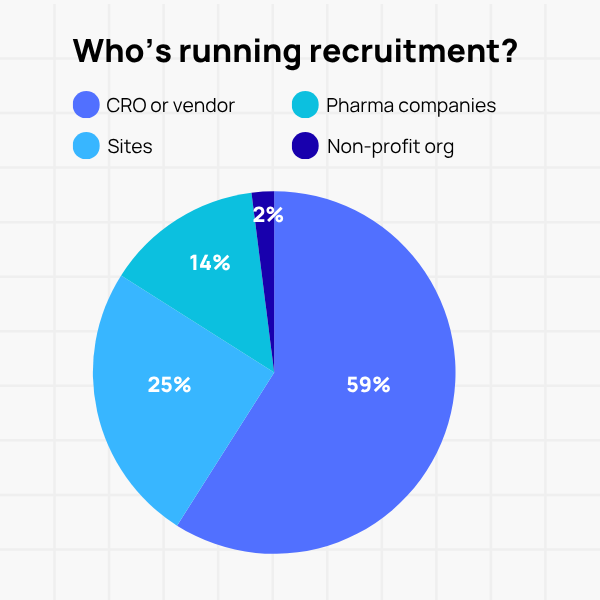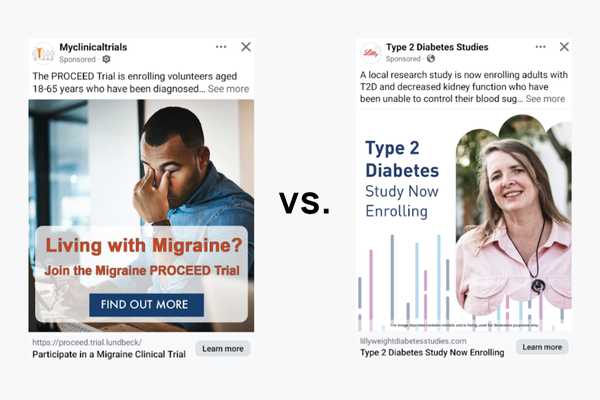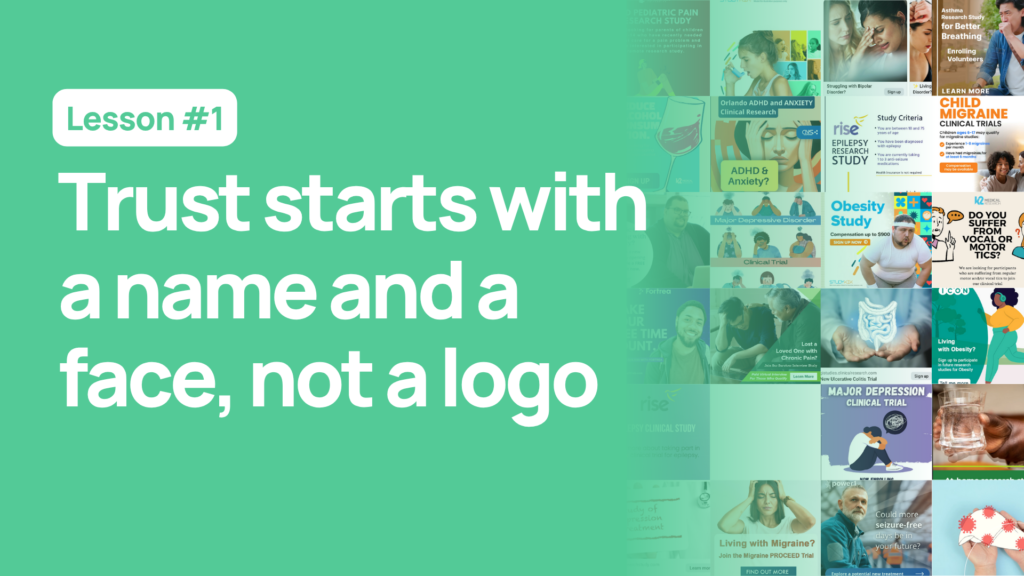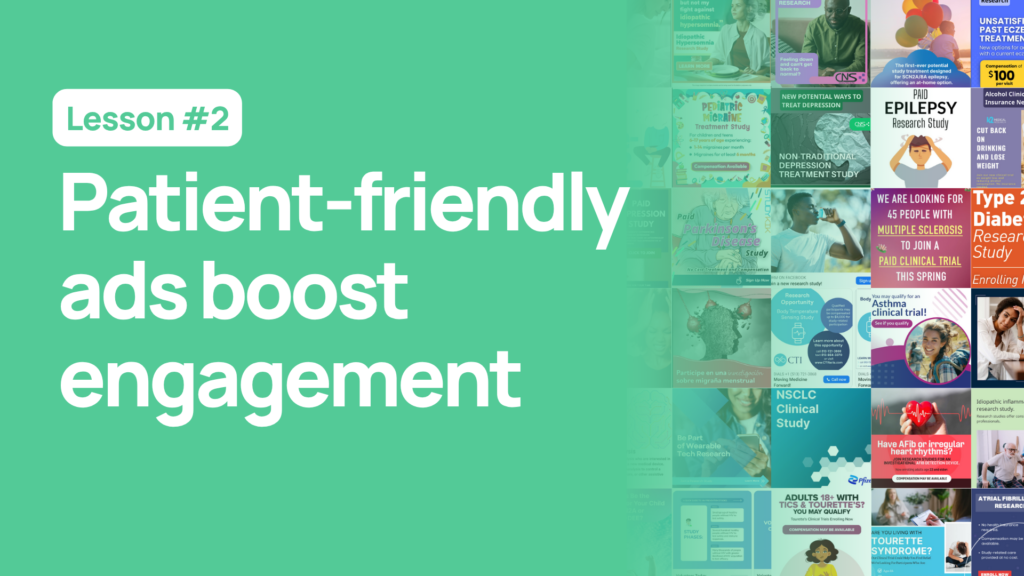Trust starts with a name and a face not a logo.
This is just one lesson we learned!
Download the full eBook to explore all the insights we gained from analyzing 100 live patient recruitment ads.
Patients connect with people, not brands
Recruiting patients for clinical trials isn’t just about reach, it’s about trust. Delays and budget overruns often trace back to one simple truth: people don’t respond to logos, they respond to people. In a world saturated with digital ads, patients scroll past anything that feels impersonal or insincere.
True connection starts when a message feels human and when it speaks to real questions and offers real understanding. In this section, we explore how human-centered storytelling turns digital outreach from noise into meaningful engagement.

The importance of going where patients already spend their time online
Patients don’t click on logos, they click on messages they trust. Ads that feel human and familiar, such as those representing recognizable researchers or credible organizations, naturally inspire confidence. When an ad comes from a faceless sponsor page or a brand with little transparency, skepticism builds instantly.
And the data backs this up: CISCRP found in a recent study that 50% of respondents said it is either “very important” or “somewhat important” to know the staff conducting a clinical trial. That’s half of all potential participants placing value not just on the science, but on the people behind it.

When patients aren’t sure who’s behind an ad, they rarely take the next step to learn more. But when they see authenticity either through a name, a face, or a clear sense of who is inviting them to participate trust forms… engagement follows. In clinical trial recruitment, that trust is often the difference between hesitation and action.
Who is running digital recruitment campaigns right now?
Patients are quick to click away when a brand or sponsor feels anonymous or “salesy.” Leading with clear identification and a human face (such as a study doctor or real patient testimonial) goes much further than you think. Some high-performing campaigns even included short video greetings from a study nurse, humanizing the whole process.

Why this matters for patient recruitment
Our analysis of 100 live patient recruitment ads showed that CROs and vendors run 59% of all patient recruitment ads, while sites account for 25%, pharma companies 14%, and non-profits only 2%.
This reflects a clear operational trend toward outsourcing recruitment for speed and scalability. Yet for patients, the origin of the message shapes trust as much as its content. When most outreach comes from third-party vendors rather than recognizable clinical sites or sponsors, patients may question legitimacy or feel disconnected from the study itself.
For industry leaders, this highlights a strategic opportunity. Recruitment partners bring technical precision and performance, but patients respond best when they can see the human side of research. The most effective campaigns combine vendor expertise with sponsor and site authenticity, ensuring that every ad not only reaches the right person but also reflects the credibility and care behind the science.
How this looks with real-world patient recruitment ads


When recruitment misses the mark, you’re left unable to reach a majority of your patient population. More than 55% of U.S. adults use social media to look for health information or advice at least occasionally.
When ads come from recognizable hospitals, research centers, or trusted organizations, people are far more likely to engage. Familiarity builds confidence and signals legitimacy, reassuring potential participants that the opportunity is real. In contrast, ads from unbranded or unfamiliar pages often get overlooked or dismissed.
In some campaigns, AI-generated images were tested in an effort to make ads feel more relatable. Yet audiences are quick to detect anything that seems artificial. When images looked even slightly unrealistic, users responded with skepticism, asking whether the people shown were real. Authenticity proved more powerful than any creative shortcut.





